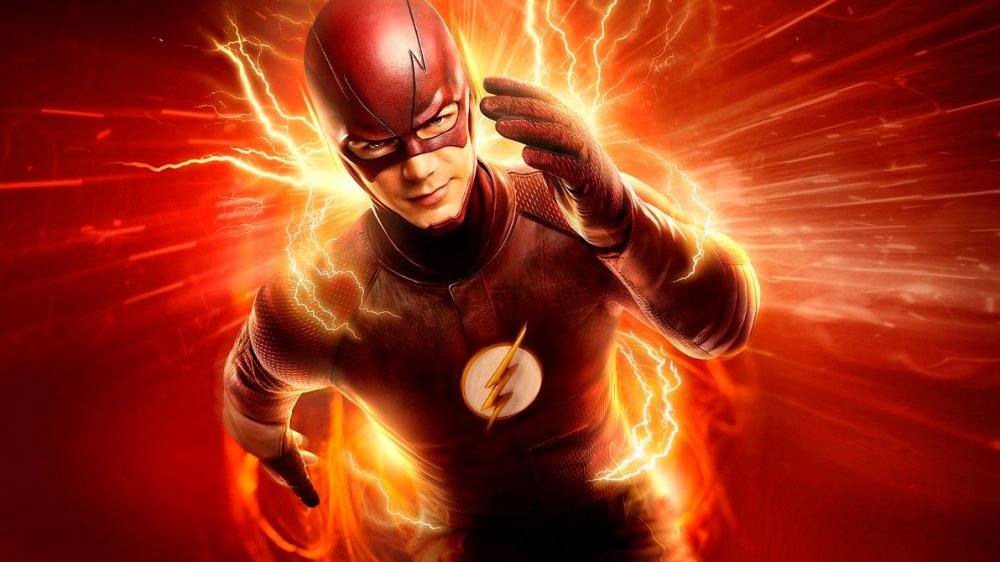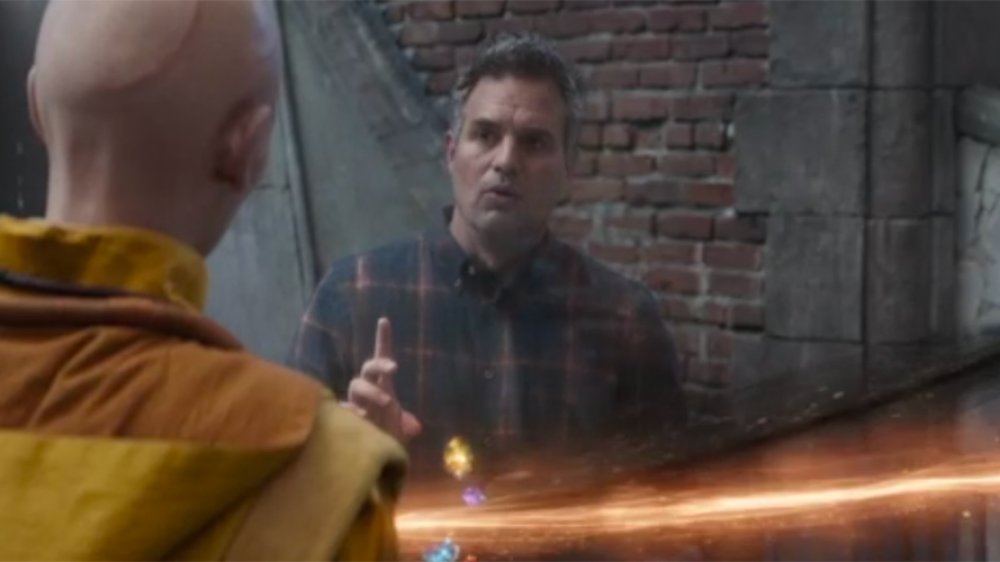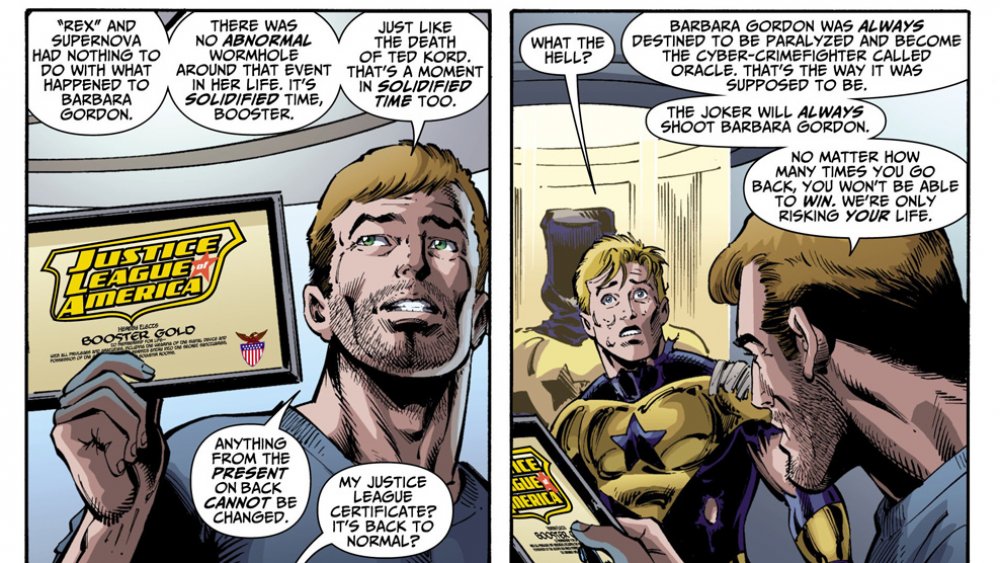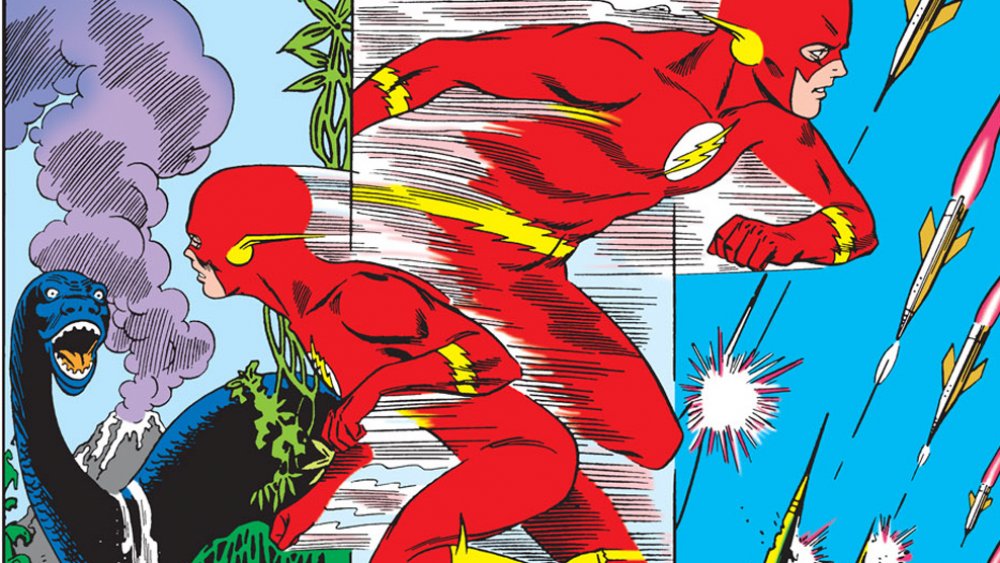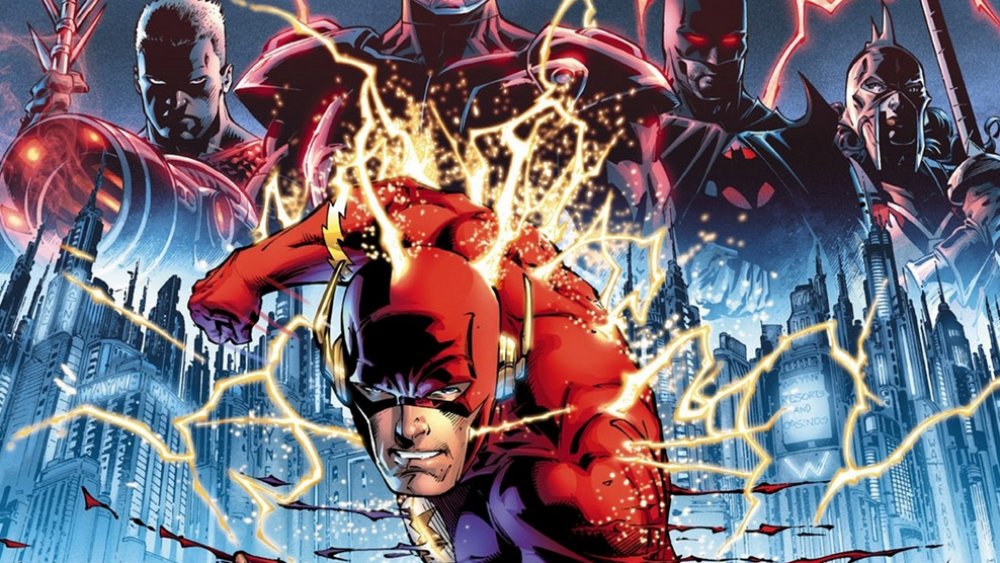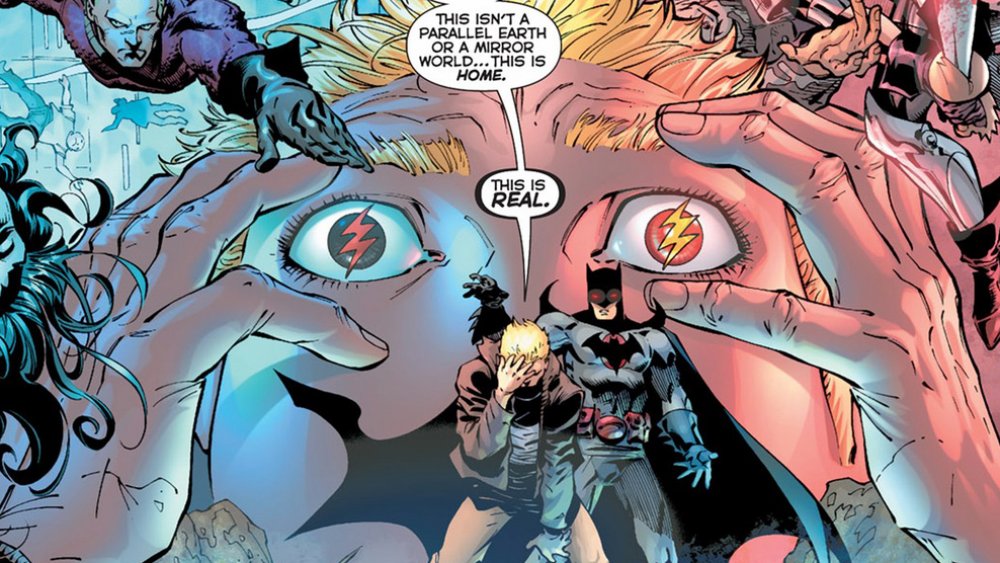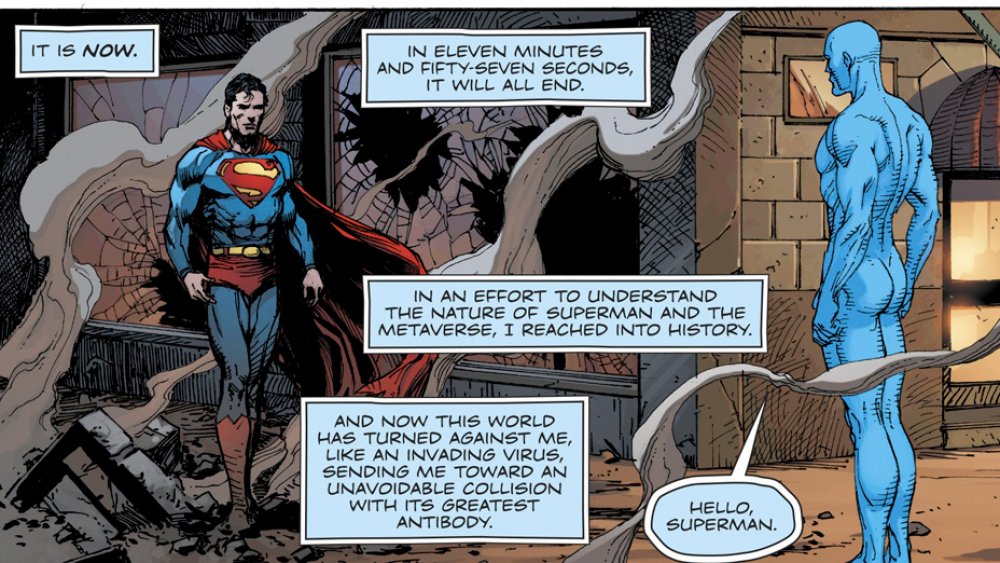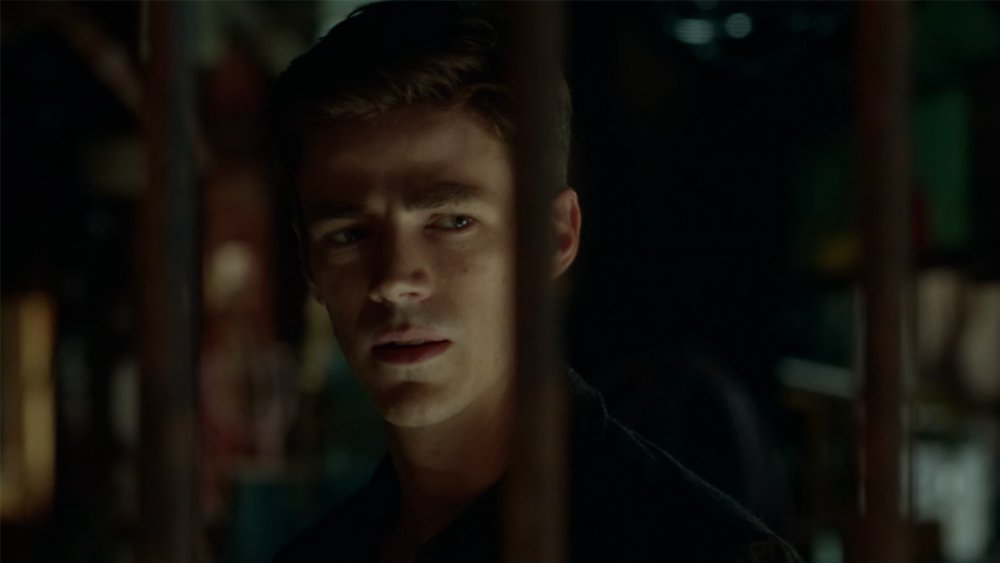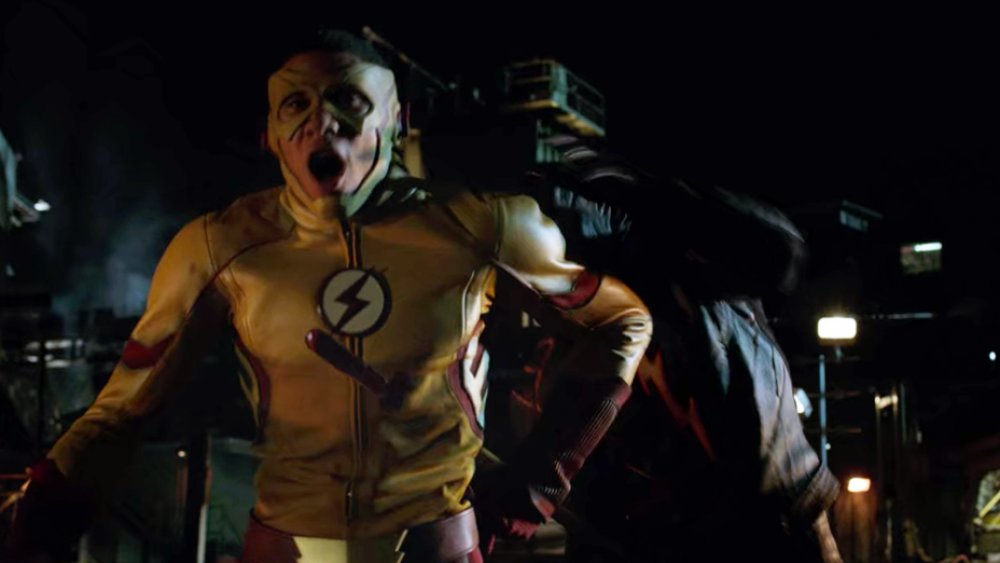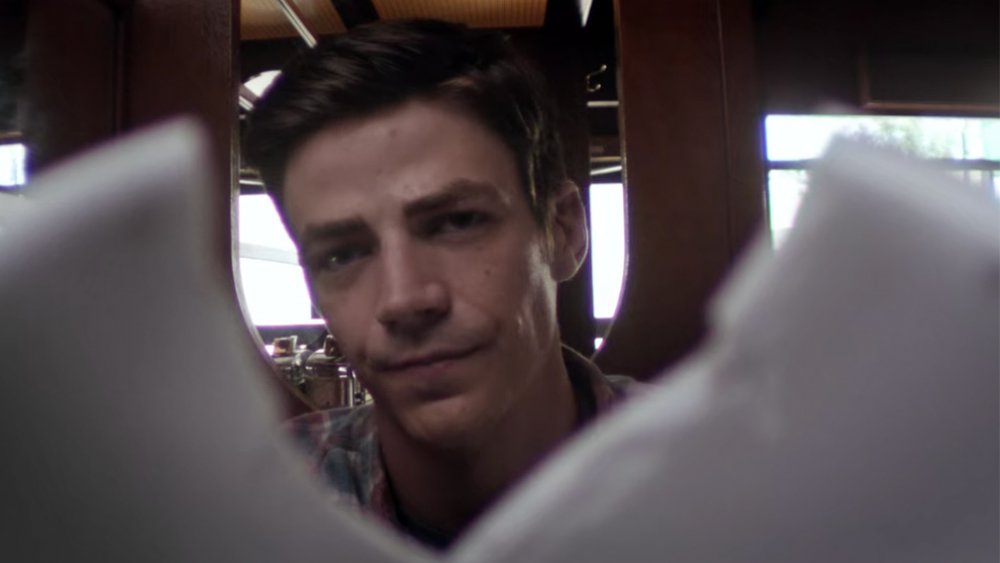DC's Flashpoint Timeline Explained
It's easy to argue that the most tantalizing superpower of all is time travel. Gas up the DeLorean or hop into Bill and Ted's phone booth, and the possibilities are endless. You could see things no other human being has ever seen, find out whether the dinosaurs were big fat feathery birds, or jump forward and check if we ever actually end up in Mad Max times, and if we have more than three or four yeas before that happens. The most intriguing bit, though? You could change the past, correct the injustices of the world, and fix every mistake hat you've ever made.
Of course, if the CW's Flash is anything to go by, that would probably just make everything infinitely worse. For evidence, look no further than the Flashpoint, an alternate timeline where Barry Allen tried to save his mother's life, only to ruin literally everyone else's in the process. There are some questions, though: how and why did all of that happen? Why is the timestream so messed up from a single act? And just what went wrong with Barry's best intentions? From the time travel mechanics of the comics that inspired it to the way it played out for the Arrowverse, here are all the complicated details of the "Flashpoint" timeline, explained at last.
Time Travel 101: Timeslides
If you really want to understand how the "Flashpoint" timeline works, then you need to understand how time travel works in the DC Universe — and if your eyes are already glazing over, don't worry. It's not quite as complicated as it sounds. It's actually pretty interesting, if only because over their years as rivals, Marvel and DC have taken two completely different approaches to juggling their characters' tendencies to meddle in the time stream.
As you saw in Avengers: Endgame, the Marvel Universe operates on something that's pretty close to Bill & Ted rules, in that there's only one "correct" timeline, and any attempt to change something actually just splits things off into an alternate timeline. If Spider-Man wants to go back and save Uncle Ben, for instance, he can absolutely do so, but it won't actually change anything for him. When he comes back home to good ol' Earth-616 (the core Marvel Universe), Uncle Ben will still be dead, there'll just be another universe out there in the infinite catalogue of What If... back issues where Peter Parker grew up with one fewer tragedy in his backstory.
What makes this really interesting is that the Marvel Universe is home to plenty of characters who have actually traveled back to the present day from some grim, dystopian future in hopes of changing things. The thing is, characters like Cable aren't actually trying to change their own futures — they've literally already happened. Instead, they're trying to create a better world for others by changing things here, which is a pretty heroic act if you think about it. The Distinguished Competition, on the other hand, does things a little differently.
Time Travel 102: Hypertime
While DC has its own multiverse stocked with countless alternate timelines — somewhere between two and infinity, depending on when you're reading the comics — they're not created by time travel. It won't really come up here, but just in case you're wondering, they were all hammered into existence by a 30-foot blacksmith from the Sixth Dimension named Alpheus the World-Forger who lives on the underside of the multiverse in an ocean of bad ideas. That's — wait, come back! We still need to explain time travel!
Right, back to the basic idea. Like Marvel, the DC Universe also only has one "correct" timeline. The difference is that DC's timeline is much more mutable. You can go back and meddle with time all you want, and in quite a few circumstances, you can indeed make changes... to a certain extent. See, because the DC Universe has a function to perform in the multiverse, there are certain events that you cannot change, no matter how hard you try. Generally speaking, you're not going to stop Krypton from exploding and baby Kal-El from landing on Earth, for instance, and as much as you might want to tell Martha Wayne that maybe pearls are a little too dressy for the movie theater, you're probably not going to keep her son Bruce from having a really bad time when they take a shortcut down Crime Alley.
Those immutable moments in the timeline are usually referred to as "solidified time," although what exactly causes them can be pretty arbitrary. You'd expect the DC Universe to resist any change that would eliminate Superman, but Booster Gold once went back to prevent the Joker from shooting Barbara Gordon, which, while definitely significant to readers, isn't quite on the same level in terms of cosmic importance. And yet, no matter what he did, no matter how many times he tried to prevent the events of The Killing Joke from happening, he couldn't stop it. In a very real way, it seems that whatever force guides the universe is very aware of what comics have sold well enough that they should have a more or less permanent place in history.
Long story short: the universe has a preferred shape, and if you try to push it into another form, it just snaps back... unless you push too hard and wind up breaking the whole thing, Barry.
Back to the future
You might not think that "running pretty fast" would be the superpower that's most closely associated with traveling through time, but the Flash has been super-speeding his way around the timestream since 1961. That wasn't exactly uncommon back in the Silver Age — Batman and Robin would travel back in time on numerous bizarre occasions, and Superman spent most of his teenage years hanging out with his friends in the 30th century — but for the Flash, it became a core piece of the character.
A big part of that has to do with the eventual reveal that Barry's wife, Iris West, was herself a time traveler who was born in the 30th century. Barry would even retire to the distant future himself after his comic was canceled in the early '80s, and his successor, Wally West, would have plenty of chronal adventures himself. Wally would even briefly switch places with his own 25th century successor, John Fox, who would wind up settling in the year 85,271 AD.
It's as much a part of the Flash's legacy as yellow boots, but despite being a pretty frequent source of adventure, Barry and Wally never had much luck with changing things. Both of them would often run into that same problem of the universe having a preferred way for things to work out, which unfortunately included Barry dying. Despite his retirement, Barry was fated to die in the events of Crisis On Infinite Earths, and when Wally tried to go back to save his mentor years later, he found that his disruptive presence only made things worse.
That didn't stop them from trying, though, especially when it came to the deaths of their loved ones. After his own return from the dead, Barry discovered that his mother was murdered by Eobard Thawne (also known as Professor Zoom, the Reverse Flash), another one of those time-travelers. Assuming that one time-traveler's meddling could be reversed by another's, Barry resolved to go back in time and save his mother's life, a pretty understandable thing for someone to want. So he did.
And that basically destroyed the entire universe.
Flashpoint on the page
When Barry Allen woke up after changing history, he didn't remember doing it, and not just because the first thing he did in the new timeline was fall down a flight of stairs, which is a pretty hilarious way to be introduced to a brand new dystopia. Instead, he assumed that he'd been trapped in a bad universe by a supervillain.
That might seem like a pretty big leap of logic, but consider two things. First, he's the Flash, and that sort of thing actually does happen to him a lot, so it's a pretty safe assumption. Second, and perhaps more importantly, the changes to the timeline had resulted in a world so miserable that it was impossible to imagine that anyone other than the most depraved villain had created it. There was no Justice League in this new timeline, for instance, because two of its most well-known members, Aquaman and Wonder Woman, were leading their respective nations of Atlantis and Themyscira against each other in a war that had destroyed most of Western Europe and a big chunk of Northern Africa. Also, Superman wasn't around because his rocket from Krypton had crashed into downtown Metropolis and killed 35,000 people, leading him to be secretly abducted by the government and experimented on for decades.
Perhaps the most striking changes in the Flashpoint universe revolved around Batman. Thanks to Barry's mom-related meddling, Thomas and Martha Wayne weren't shot in Crime Alley. The bad news is that their young son Bruce was, which drove his parents over the edge in two very different ways. Martha got incredibly depressed, which is understandable, and decided to regain her smile by carving one into her face with a knife and becoming the Joker, which is... less understandable. Thomas, meanwhile, took an even stranger path of dressing up like a bat and beating up criminals at night. What kind of weirdo does something like that?
The Flashtermath
As you might expect, Barry eventually decided that saving his mother at the cost of several million other people, including Batman, probably wasn't worth it, so he went back and stopped himself from changing history. The problem is that once something is as broken as the Flashpoint timeline was, gluing it back together is a little more difficult than it seems. You're never going to get everything exactly right, and in Barry's case, he didn't even get close.
The ripples in the timestream that were caused by his temporal meddling resulted in the DC universe being completely restructured, which in the real world took the form of DC's "New 52" initiative. The entire line was canceled and relaunched with a new continuity, where Superman wore a suit of armor that aged about as well as the average avocado, Barbara Gordon was back to being Batgirl, and the timeline of the Justice League's existence was shortened to about five years, with a suspiciously cinematic lineup.
Also, the characters that had been published by separate imprints within DC — mostly the Vertigo line, which included John Constantine and Swamp Thing, and the WildStorm universe, which was brought to DC from Image as part of the deal that made Jim Lee co-publisher of the company — were folded into the mainline universe. Things were drastically different, to the point of eliminating an entire generation of superheroes from the timeline, with the World War II-era Justice Society of America being obliterated from history. That seems like an awfully big change to come from rescuing exactly one person from being murdered, but the multiverse is a strange and fragile thing.
Terminated
This lasted until 2016, when the "Rebirth" event brought back some of the things people missed from the pre-Flashpoint universe. In 2019, the Doomsday Clock event went a step further, absolving Barry of his temporal crimes by establishing that all of this was down to the nude meddling of Doctor Manhattan from Watchmen, who was trying to figure out why his home universe was so much gloomier than the one with Superman in it.
No, really. He fought the whole Justice League with no pants on and everything.
The point of all this is that, as the saying goes, you can't cross the same river twice, especially when said river is complicated superhero continuity. The slightest change can have widespread consequences, and when it's the Flash doing the changing things can quickly get out of hand. Unfortunately, no matter what universe he's in, Barry Allen just can't help himself.
Flashpoint on the screen
All of that brings us to the third season of the CW's Flash TV show, and its premiere episode, "Flashpoint." Just like the comics, it starts with Barry going back in time to prevent Zoom from killing his mother. And just like the comics, the world he comes back to is very different, and also significantly worse.
It's not as world-shattering as it is in the comics — Europe still exists, for example, and while we don't see him, it's difficult to believe that Thomas Wayne is hacking bad guys up with a machete while dressed up as Dracula — but it's still a pretty bad time for his friends. By saving Nora Allen (and keeping his father, Henry from being wrongfully imprisoned for the crime for his entire life), Barry was never taken in by the Wests, and never formed the familial relationship with Iris and Joe that he had in his own timeline. That's good for Barry and Iris — dating someone who was essentially his sister while he was growing up was and is a little weird — but that also somehow resulted in Joe becoming an alcoholic who was distant from the rest of his family.
Speaking of the Wests, while this reality had its own Flash, freeing up Barry to spend his time hanging out at a coffee shop and presumably rehearsing musical numbers with Supergirl, it turned out to be Wally West. Wally had the speed, but he didn't have the partners or resources that Barry had as the Flash, namely Cisco Ramon, Caitlin Snow, and the rest of the crew at S.T.A.R. Labs. While Cisco's genius had made him incredibly rich in the new timeline, he was unwilling to put himself at risk to help others, and Caitlin was a pediatric ophthalmologist.
Barry's Bogus Journey
Eventually, Barry realized that the new timeline was actively getting worse, and that he'd traded his own happiness for a pretty significant amount of suffering by others. Wally in particular took the brunt of it, including being impaled with a pipe by Rival, an evil speedster. Despite the rapid healing that usually comes along with super-speed, Wally's injury remained, and he was left comatose.
Even worse — for Barry at least — was that his very existence in the Flashpoint was causing his memories of the old universe to be overwritten. As a result, he was losing his emotional connection to the other members of the team, as well as the love that he felt for Iris. In the end, he realized that he had to set things right again. Like the comics, that meant letting Zoom kill his mother, and like the comics, it resulted in a universe where things weren't quite back to where they were when things began.
When Barry returned from his second trip to the past, things were mostly back to normal, but the key word there is "mostly." As Jay Garrick, the Flash of Earth-2, would later put it, the space-time continuum was like a coffee cup, and traveling back to the past was like smashing it to pieces. You can put it back together, but "no matter how hard you try, it's never gonna be exactly how it was." All you end up with is an increasingly fragile cup.
Judgment Day
Having learned that the hard way, Barry was left with the rebooted timeline, and all of its changes. Some of them were good — or at least, value neutral — like S.T.A.R. Labs having a better facility for testing out super-speed and Ralph Dibny, who had died in the particle accelerator explosion back in the original timeline, being alive, well, and having stretchy super-powers of his own. Others... not so much. The first clue that things were wrong came when Barry realized that Joe and Iris were no longer speaking to each other, owing to Iris's discovery that Joe had lied about her mother being dead. Again: pretty understandable.
Cisco Ramon was an even more direct target of a shift in the timeline. His brother Dante had died in a car accident. Since Barry refused to go back and save Dante in the same way that he'd tried to save a member of his own family, his friendship with Cisco was left nearly shattered. The changes even spread beyond Flash itself, with Dig having a son instead of a daughter on Arrow, and Zoom would wind up trying to escape being erased from the timestream by causing a bunch of trouble that had to be dealt with on Legends of Tomorrow. It would even ripple out into further trouble once the timeline was "fixed." One version of Barry was left as a "time remnant" — someone who becomes disconnected from the time stream when their own timeline is erased from existence — would go on to be one of the show's major villains as Savitar.
It would have a meta-textual effect on the series, too. Both season 2 and season 3 of The Flash were much darker in tone than the first had been. By the time it got to Barry having to enable his own mother's murder and then fight a version of himself who had been tortured by isolation from his own timestream and wanted to murder Iris, things were maybe a little too grim for a show where one of the major villains is a telepathic talking super-gorilla. In an interview before season 4, series producer Todd Helbing said "that's about as dark as we want to go with this show, so we're going to dial it a little bit back." He also said "I think we've all had our fill of time travel for a bit. It's confusing and hard to tell those stories." Can't imagine where he got that idea.
